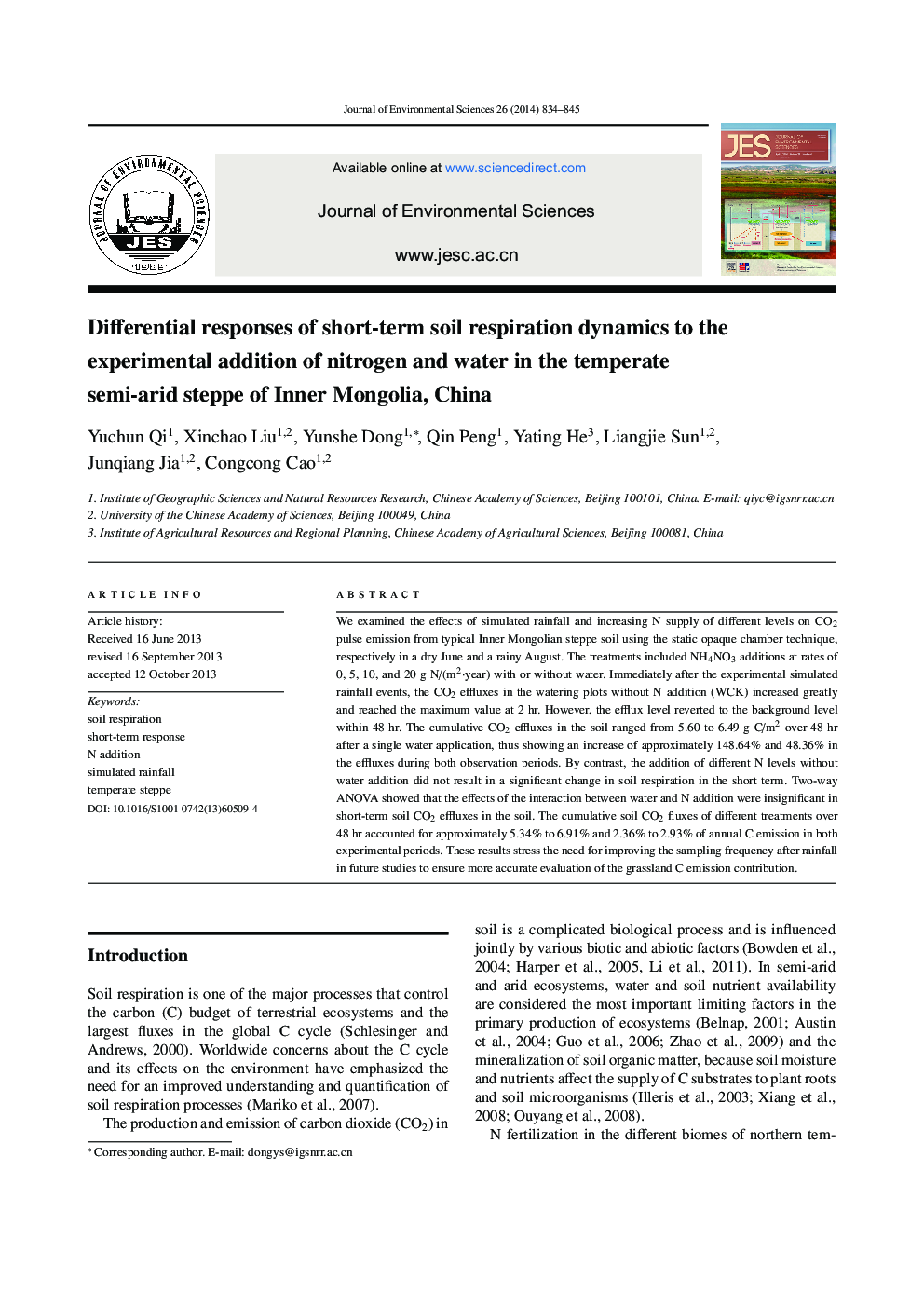| Article ID | Journal | Published Year | Pages | File Type |
|---|---|---|---|---|
| 4454448 | Journal of Environmental Sciences | 2014 | 12 Pages |
We examined the effects of simulated rainfall and increasing N supply of different levels on CO2 pulse emission from typical Inner Mongolian steppe soil using the static opaque chamber technique, respectively in a dry June and a rainy August. The treatments included NH4NO3 additions at rates of 0, 5, 10, and 20 g N/(m2·year) with or without water. Immediately after the experimental simulated rainfall events, the CO2 effluxes in the watering plots without N addition (WCK) increased greatly and reached the maximum value at 2 hr. However, the efflux level reverted to the background level within 48 hr. The cumulative CO2 effluxes in the soil rang ed from 5.60 to 6.49 g C/m2 over 48 hr after a single water application, thus showing an increase of approximately 148.64% and 48.36% in the effluxes during both observation periods. By contrast, the addition of different N levels without water addition did not result in a significant change in soil respiration in the short term. Two-way ANOVA showed that the effects of the interaction between water and N addition were insignificant in short-term soil CO2 effluxes in the soil. The cumulative soil CO2 fluxes of different treatments over 48 hr accounted for approximately 5.34% to 6.91% and 2.36% to 2.93% of annual C emission in both experimental periods. These results stress the need for improving the sampling frequency after rainfall in future studies to ensure more accurate evaluation of the grassland C emission contribution.
